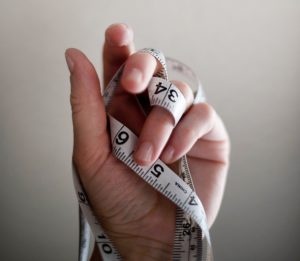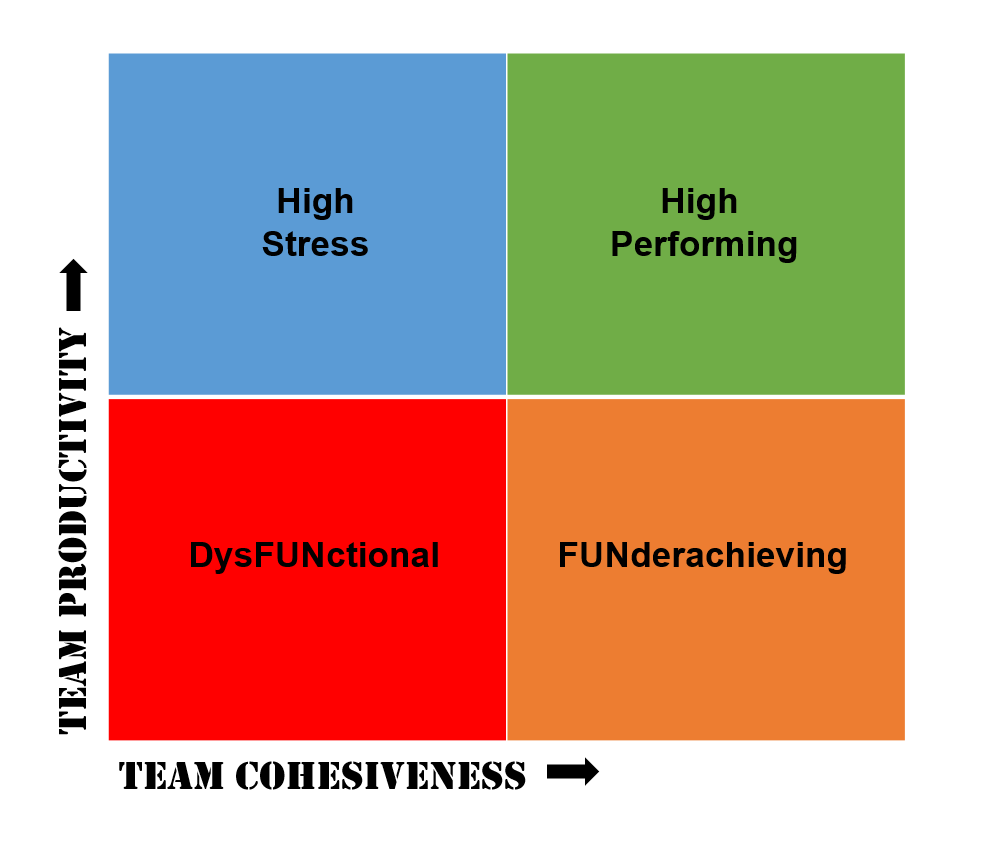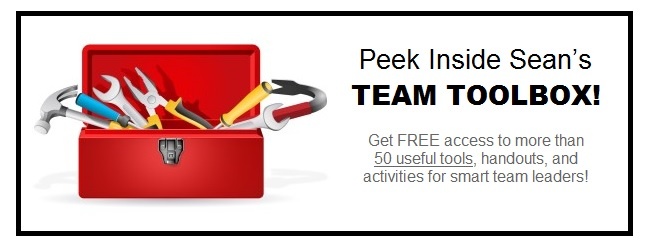 If you are looking for a team performance chart to identify where your people are in terms of productivity or cohesiveness, the one below could truly help improve your organization.
If you are looking for a team performance chart to identify where your people are in terms of productivity or cohesiveness, the one below could truly help improve your organization.
Team productivity is a measure of how successful your people are in terms of project completion or work efficiency.
Team cohesiveness is a measure of how well your people interact with each other and collaborate to accomplish team goals.
But not every team that displays productivity enjoys cohesiveness, just as not every team that enjoys cohesiveness displays productivity.
This team performance chart shows the four types of teams:
 The first and perhaps most disappointing team type you may have seen or been a part of is the team who displays poor productivity and lacks cohesiveness. These teams are identified as “Dysfunctional,” and they are often toxic mix of poor results and negative attitudes.
The first and perhaps most disappointing team type you may have seen or been a part of is the team who displays poor productivity and lacks cohesiveness. These teams are identified as “Dysfunctional,” and they are often toxic mix of poor results and negative attitudes.
The second type of team we’ll discuss is one that may meet expectations or successfully complete a project, but has done so without much group interaction. These “High Stress” groups are not really teams at all, as they do not usually take advantage of other’s skills or insights, and are driven by pride or ego to do it their way. This requires much more time and energy, though, and often becomes an environment of petty turf wars and personal conflicts.
The third type of team on the team performance chart can be frustrating to managers because they get along well and seem to be collaborating and sharing, but those collegial interactions simply fail to produce acceptable results. This group has built strong relationships, but earn the title of “Fun-derachievers” because while they may enjoy working together, they underachieve because they are either unfocused on the organization’s goals or not performing their defined roles.
The final type of team to discuss is what we all strive to create. “High Performing” teams are not only focused and successful in producing results, but they do so through the interdependent relationships they build with those that surround them. By taking advantage of other’s insights and skills, winning teammates leverage their time and efforts, becoming both more effective and more happily engaged as part of a group that can support each other and celebrate successes together.
So What Do I do Now?
If you are dealing with one of the first three types of teams from the team performance chart, the best way to help your organization is to identify where the problem lies. Is your team best described now as dysfunctional, or are they struggling as a high stress or “funderachieving” group?
If they are “dysfunctional,” you need to design experiences or training events where your people can connect. Unity is inspired by connecting to two things – a compelling common goal, and each other. Engagement and unity are symptoms of people who know and value why they are their and who they are there with.
If they are “high stress,” perhaps a team personality profiles workshop or fun team building event would help to build bridges and ignite the collaboration you desire.
If they are “funderachieving,” perhaps you need to refocus your people on organizational goals and spend more time on defining roles or providing feedback to encourage improved performance.
If they are “high performing,” enjoy the experience and be sure to recognize and appreciate their level of teamwork and effectiveness. Maintaining high levels of team productivity and cohesiveness doesn’t just happen. Sustaining those results is the consequence of your commitment to keep the right people in the right position working with the right attitude.
Where on the team performance chart does your team reside?
If they are not high-performing, it may be helpful to schedule a teamwork workshop to focus on a specific issue – or a team building event to improve their productivity and cohesiveness.
By understanding where on the team performance chart your people are, you can address your team’s needs and get the great results you want!
Click below to get access to the FREE resources in my teamwork toolbox – over 50 printable handouts and activities to help smart leaders grow a more cohesive and focused team – in any industry!

